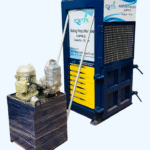Electrical safety is something every workplace relies on, yet it’s often one of the most overlooked areas of compliance. Faulty cords, ageing appliances, and untested equipment can quickly turn into workplace risks—many of which can be prevented with a strong Electrical Test and Tag routine.
If you’re aiming to protect your people, reduce downtime, and stay compliant with Australian Standards, understanding smarter test and tag strategies is essential.
Why Electrical Test and Tag Matters More Than You Think
Many workplaces assume electrical risks only occur when something visibly breaks—but the reality is different. Most electrical hazards start small, often unnoticed until they escalate into a shock, equipment failure, or even a fire.
A structured Electrical Test and Tag program ensures every appliance is inspected, tested, and clearly labelled so you know exactly what is safe to use. It also helps you:
- Reduce electrical incidents and liability
- Improve the lifespan of equipment
- Maintain full compliance with workplace safety regulations
- Keep staff confident and protected
The simple act of tagging equipment not only creates accountability but also reinforces a strong culture of workplace safety.
Understanding What Gets Tested and Tagged
Not every electrical item is treated the same. Different workplace environments carry different levels of risk, which means different testing requirements.
Common equipment requiring regular testing includes:
- Portable power tools
- Extension leads and power boards
- Kitchen appliances in staff areas
- Commercial and industrial machinery
- Chargers, monitors, and office electronics
High-risk environments like workshops, construction sites, and manufacturing spaces generally require more frequent tagging due to constant equipment handling and exposure to wear and tear.
What Smart Test & Tag Practices Look Like Today
A modern Electrical Test and Tag program goes beyond simply placing a coloured sticker on equipment. Smarter testing includes a combination of planning, tracking, evaluation, and documentation. Here’s what an effective approach should include:
1. Create a Clear Testing Schedule
A documented schedule helps ensure all electrical assets are tested before their due dates. It also reduces disruption to workflow and prevents equipment from falling through the cracks.
2. Keep Detailed Records
Every test should be logged with information such as:
- Item description
- Test date
- Tester details
- Results and notes
- Next due date
Good record-keeping supports compliance and simplifies audits.
3. Remove and Replace Unsafe Equipment Immediately
If an appliance fails, tagging it as “Do Not Use” is essential—but removing it from the work area is even better. This prevents accidental use and ensures hazards are eliminated quickly.
4. Ensure Staff Know What Each Tag Means
Colour coding matters. Each tag provides information about when testing was completed and when it’s due again. Training workers to recognise tags reduces risk and boosts safety awareness.
5. Use Competent, Trained Testers
Incorrect testing is as dangerous as not testing at all. Working with trained and accredited technicians ensures every test meets Australian Standards (AS/NZS 3760).
How Test & Tag Supports Broader Workplace Safety
Electrical safety doesn’t exist in isolation. It works hand-in-hand with other essential workplace safety measures. One of the most important connections is between electrical testing and your evacuation plans.
Electrical Safety and Evacuation Planning Go Together
A workplace with faulty electrical equipment is at higher risk of fire, which means your evacuation procedures need to be up to date and clear. Regular Electrical Test and Tag minimises these risks, helping ensure that evacuation plans remain a last resort—not a necessity.
An effective evacuation plan should include:
- Marked emergency exits
- Updated evacuation diagrams
- Clearly identified assembly areas
- Staff roles during an emergency
- Regular practice drills
When electrical hazards are reduced, evacuations become safer, workplaces stay calmer, and overall emergency preparedness improves.
Signs Your Workplace Needs Better Test & Tag Management
Even if your workplace currently tests and tags equipment, there are signs you may not be doing enough:
- Your tags show overdue dates
- You have no unified asset register
- Staff report equipment faults regularly
- Unauthorised appliances appear in the workplace
- Equipment is repaired but not re-tested
- High-risk areas are tested at the same frequency as low-risk zones
If any of these sound familiar, it’s time to rethink your approach.
Tips for Making Your Work Environment Safer Today
Even small changes can significantly reduce risk. Here are some quick improvements you can implement immediately:
- Encourage staff to report frayed cords and flickering equipment
- Avoid overloading power boards
- Store electrical equipment properly after use
- Ensure all repaired equipment undergoes re-testing
- Keep walkways and communal areas clear of cables
These actions complement your test and tag strategy, enhancing workplace safety overall.
The Future of Electrical Safety in Workplaces
As technology evolves, workplaces rely on more portable and rechargeable devices than ever before. This means electrical safety practices must also evolve.
Moving forward, businesses will benefit from:
- Digital tagging systems
- Automated test reminders
- Cloud-based reporting
- Smart asset tracking
These modern tools make compliance easier while improving accuracy and reducing downtime.
Ready to protect your workplace with reliable, professional Electrical Test and Tag services? Australia Fire Protection delivers fully compliant testing, accurate reporting, and tailored safety solutions designed for every industry.
Let us help you create a safer, smarter, and fully compliant work environment—book your service today.



